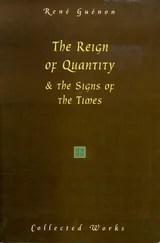It is unfortunate that his copious illustrations are arranged in so unskilful a manner as to give a dry and repulsive air to the whole work. The original documents, on which it is established, instead of being reserved for an appendix, and their import only conveyed in the text, stare at the reader in every page, arrayed in all the technicalities, periphrases, and repetitions incident to legal enactments. The course of the investigation is, moreover, frequently interrupted by impertinent dissertations on the constitution of 1812, in which the author has fallen into abundance of crudities, which he would have escaped, had he but witnessed the practical operation of those liberal forms of government, which he so justly admires. The sanguine temper of Marina has also betrayed him into the error of putting, too uniformly, a favorable construction on the proceedings of the commons, and of frequently deriving a constitutional precedent from what can only be regarded as an accidental and transient exertion of power in a season of popular excitement.
The student of this department of Spanish history may consult, in conjunction with Marina, Sempere's little treatise, often quoted, on the History of the Castilian Cortes. It is, indeed, too limited and desultory in its plan to afford anything like a complete view of the subject. But, as a sensible commentary, by one well skilled in the topics that he discusses, it is of undoubted value. Since the political principles and bias of the author were of an opposite character to Marina's, they frequently lead him to opposite conclusions in the investigation of the same facts. Making all allowance for obvious prejudices, Sempere's work, therefore, may be of much use in correcting the erroneous impressions made by the former writer, whose fabric of liberty too often rests, as exemplified more than once in the preceding pages, on an ideal basis.
But, with every deduction, Marina's publications must be considered an important contribution to political science. They exhibit an able analysis of a constitution, which becomes singularly interesting, from its having furnished, together with that of the sister kingdom of Aragon, the earliest example of representative government, as well as from the liberal principles on which that government was long administered.
[1] Aragon was formally released from this homage in 1177, and Portugal in 1264. (Mariana, Historia General de España, (Madrid, 1780,) lib. 11, cap. 14; lib. 13, cap. 20.) The king of Granada, Aben Alahmar, swore fealty to St. Ferdinand, in 1245, binding himself to the payment of an annual rent, to serve under him with a stipulated number of his knights in war, and personally attend cortes when summoned ;—a whimsical stipulation this for a Mahometan prince. Conde, Historia de la Dominacion de los Arabes en España, (Madrid, 1820, 1821,) tom. iii. cap. 30.
[2] Navarre was too inconsiderable, and bore too near a resemblance in its government to the other Peninsular kingdoms, to require a separate notice; for which, indeed, the national writers afford but very scanty materials. The Moorish empire of Granada, so interesting in itself, and so dissimilar, in all respects, to Christian Spain, merits particular attention. I have deferred the consideration of it, however, to that period of the history which is occupied with its subversion. See Part I., Chapter 8.
[3] See the Canons of the fifth Council of Toledo. Florez, España Sagrada, (Madrid, 1747–1776,) tom. vi. p. 168.
[4] Recesvinto, in order more effectually to bring about the consolidation of his Gothic and Roman subjects into one nation, abrogated the law prohibiting their intermarriage. The terms in which his enactment is conceived disclose a far more enlightened policy than that pursued either by the Franks or Lombards. (See the Fuero Juzgo, (ed. de la Acad., Madrid, 1815,) lib. 3, tit. 1, ley 1.)—The Visigothic code, Fuero Juzgo, (Forum Judicum,) originally compiled in Latin, was translated into Spanish under St. Ferdinand; a copy of which version was first printed in 1600, at Madrid. (Los Doctores Asso y Manuel, Instituciones del Derecho Civil de Castilla, (Madrid, 1792,) pp. 6, 7.) A second edition, under the supervision of the Royal Spanish Academy, was published in 1815. This compilation, notwithstanding the apparent rudeness and even ferocity of some of its features, may be said to have formed the basis of all the subsequent legislation of Castile. It was, doubtless, the exclusive contemplation of these features, which brought upon these laws the sweeping condemnation of Montesquieu, as "puériles, gauches, idiotes—frivoles dans le fond et gigantesques dans le style." Espirit des Loix, liv. 28, chap. 1.
[5] Some of the local usages, afterwards incorporated in the fueros , or charters, of the Castilian communities, may probably be derived from the time of the Visigoths. The English reader may form a good idea of the tenor of the legal institutions of this people and their immediate descendants, from an article in the sixty-first Number of the Edinburgh Review, written with equal learning and vivacity.
[6] The Christians, in all matters exclusively relating to themselves, were governed by their own laws, (See the Fuero Juzgo, Introd. p. 40,) administered by their own judges, subject only in capital cases to an appeal to the Moorish tribunals. Their churches and monasteries ( rosae inter spinas , says the historian) were scattered over the principal towns, Cordova retaining seven, Toledo six, etc.; and their clergy were allowed to display the costume, and celebrate the pompous ceremonial, of the Romish communion. Florez, España Sagrada, tom. x. trat. 33, cap, 7.— Morales, Corónica General de España, (Obras, Madrid, 1791–1793,) lib. 12, cap. 78.—Conde, Domination de los Arabes, part 1, cap. 15, 22.
[7] Morales, Corónica, lib. 12, cap. 77.—Yet the names of several nobles resident among the Moors appear in the record of those times. (See Salazar de Mendoza, Monarquía de España, (Madrid, 1770,) tom. i. p. 34, note.) If we could rely on a singular fact, quoted by Zurita, we might infer that a large proportion of the Goths were content to reside among their Saracen conquerors. The intermarriages among the two nations had been so frequent, that, in 1311, the ambassador of James II., of Aragon, stated to his Holiness, Pope Clement V., that of 200.000 persons composing the population of Granada, not more than 500 were of pure Moorish descent! (Anales de la Corona de Aragon, (Zaragoza, 1610,) lib. 5, cap. 93.) As the object of the statement was to obtain certain ecclesiastical aids from the pontiff, in the prosecution of the Moorish war, it appears very suspicious, notwithstanding the emphasis laid on it by the historian.
[8] Bleda, Corónica de los Moros de España, (Valencia, 1618,) p. 171.— This author states, that in his time there were several families in Ireland, whose patronymics bore testimony to their descent from these Spanish exiles. That careful antiquarian, Morales, considers the regions of the Pyrenees lying betwixt Aragon and Navarre, together with the Asturias, Biscay, Guipuscoa, the northern portion of Galicia and the Alpuxarras, (the last retreat, too, of the Moors, under the Christian domination,) to have been untouched by the Saracen invaders. See lib. 12, cap. 76.
[9] The lot of the Visigothic slave was sufficiently hard. The oppressions, which this unhappy race endured, were such as to lead Mr. Southey, in his excellent Introduction to the "Chronicle of the Cid," to impute to their co-operation, in part, the easy conquest of the country by the Arabs. But, although the laws, in relation to them, seem to be taken up with determining their incapacities rather than their privileges, it is probable that they secured to them, on the whole, quite as great a degree of civil consequence, as was enjoyed by similar classes in the rest of Europe. By the Fuero Juzgo, the slave was allowed to acquire property for himself, and with it to purchase his own redemption. (Lib. 5, tit. 4, ley 16.) A certain proportion of every man's slaves were also required to bear arms, and to accompany their master to the field. (Lib. 9, tit 2, ley 8.) But their relative rank is better ascertained by the amount of composition (that accurate measurement of civil rights with all the barbarians of the north) prescribed for any personal violence inflicted on them. Thus, by the Salic law, the life of a free Roman was estimated at only one-fifth of that of a Frank, (Lex Salica, tit. 43, sec. 1, 8;) while, by the law of the Visigoths, the life of a slave was valued at half of that of a freeman, (lib. 6, tit. 4, ley 1.) In the latter code, moreover, the master was prohibited, under the severe penalties of banishment and sequestration of property, from either maiming or murdering his own slave, (lib. 6, tit. 5, leyes 12, 13;) while, in other codes of the barbarians, the penalty was confined to similar trespasses on the slaves of another; and, by the Salic law, no higher mulct was imposed for killing, than for kidnapping a slave. (Lex Salica, tit. 11, sec. 1, 3.) The legislation of the Visigoths, in those particulars, seems to have regarded this unhappy race as not merely a distinct species of property. It provided for their personal security, instead of limiting itself to the indemnification of their masters.
Читать дальше












